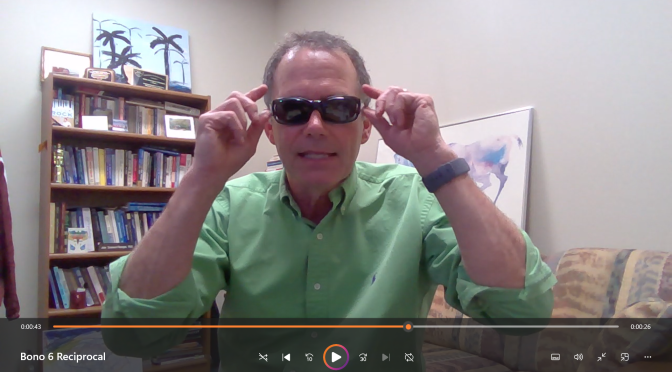
Language is powerful, but sometimes subtle in its influence. Last week in Group class I talked about using psychoeducation to teach people the power of language. As an example, I mentioned the work of Isolina Ricci, and the best post-divorce book ever, Mom’s House, Dad’s House. Ricci tells separated or divorced parents they should change the words they use to refer to their “Ex.” Because “Ex” refers to the former relationship with a romantic partner, it gets to the heart of how people use language to live in the past. Ricci says that we should use “My children’s Mom” or “My child’s Dad” because doing so accurately describes the current relationships. Years ago, I taught her language-based principles in the divorce education courses offered through Families First.
In a class-based group, my students brought up that perhaps we should shift from language that identifies others as “racist” to describing them as “people with racist tendencies.” I was happy my students were grappling with the influence of language. . . and was reminded of my first encounter when I really learned about the power of language and labels.
While in the University of Montana library about 4 decades ago, I recall reading something by Gordon Allport. Given it was so long ago, the memory is surprisingly vivid. Sadly, I can’t conjure up the reference. What I recall is Allport describing something like this:
First, we say, John behaves nervously.
Later, it becomes, John is nervous or anxious.
Eventually, we diagnose John: John has an anxiety disorder.
Then, we diagnose everyone similar to John, and put the disorder first: Anxiety disordered youth, like John, are more likely to. . .
In the end, we’ve inserted a trait-problem in John, without consideration of the context of his initial anxiety or the specific rate of anxiety associated with his so-called “anxiety disorder.” And then we repeat this description until the problem is fully placed inside John (and others) and rarely question that presumption.
This process begs many questions. Is the anxiety really located inside John, as if it were a personality trait or a mental disorder? Where did John’s anxiety originate? If John lived years in a frightening setting, should he be blamed and labeled for having anxiety symptoms? Might it be normal for John to expect that something bad is likely to happen?
The tendency for external observers to see behaviors or symptoms in others, and then insert the behaviors and symptoms inside of those they observe is so ubiquitous that in social/cognitive psychology, they named it the “Fundamental Attribution Error.” But even that language isn’t quite right.
Fundamental attribution error is the tendency to attribute the behaviors of others as representing a “trait” or underlying disposition in them (e.g., racist). Not surprisingly, at the same time, people also tend to attribute their own behaviors to situational factors (e.g., I was more judgmental than usual, because I was a bad mood and hadn’t slept well). To use language more precisely, the fundamental attribution error might be better described as a “common” phenomenon, instead of fundamental. And, of course, that tendency is not always in error. Maybe the better terminology would be “Common misattribution tendency.” Put more simply: We tend to blame others’ behavior on them. How common is that? Very common.
This is all very heady stuff, as is often the case when we dive into constructive language and narrative therapy principles. It tends to be easier for people to change and to believe in the possibility of people changing when we use person-first language and say things like, “engaged in racist behaviors” or “exhibited signs of anxiety,” instead of using firmly constructed attributions.
Lately, in this blog I’ve been riffing with excerpts from our Clinical Interviewing textbook. Below, I’ve inserted another section from Clinical Interviewing. This excerpt is about using bias-free language in psychological reports.
******************************************
Using Bias-Free Language
No matter how careful and sensitive writers try to be, it’s still possible to offend someone. Writing with sensitivity and compassion toward all potential readers is difficult, but mandatory.
The publication manual of the American Psychological Association (APA, 2020, chapter 5) provides guidance regarding bias-free language. Additional details are provided in the APA’s Inclusive Language Guidelines (https://www.apa.org/about/apa/equity-diversity-inclusion/language-guidelines?_ga=2.54630952.2057453815.1669179921-716730077.1592238042).
Avoiding bias and demeaning attitudes is mostly straightforward. In addition to following the APA’s guidance and writing for a multidimensional audience, the best advice we have is to encourage you to conceptualize and write your intake report transparently and collaboratively. This means:
- At the beginning and toward the end of your session, speak directly with your client about the content you plan to include in the report.
- Rather than surprising clients with a diagnosis, be explicit about your recommended diagnosis and rationale.
- Discuss your treatment plan openly with clients. Doing so serves the dual purpose of providing clients with advance information and getting them invested in treatment.
- If you’re not clear about how your client would like to be addressed in the report (Mr., Ms., gender identity, ethnicity, etc.), ask directly. Avoid mis-labeling or mis-gendering clients in a psychological report. If you’re working with clients who have physical disabilities, check to see if person-first or disability-first language is preferred.
****************************
I’ve been trying to keep the word-length of these blogs reasonable, and so if you’re interested in a bit more on this topic, this link will give you Practice and Reflection 8.4: “Person-First or Identity-First Language” from, of course, the Clinical Interviewing text.









